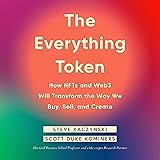In 2021, Bitcoin experienced a monumental year, surging past $60,000 and attracting unprecedented global attention from both retail and institutional investors. Many analysts predicted even higher figures, with some forecasting a peak near $288,000 by year-end, driven by intense speculation across various platforms. As the insightful video above realistically discusses, the journey of investing in Bitcoin is often misunderstood amidst this pervasive hype. This digital asset presents a unique opportunity, yet it comes with considerable volatility and a distinct set of market dynamics. Understanding these intricacies is crucial for anyone considering adding Bitcoin to their investment portfolio in 2022 and beyond. Our aim here is to provide a balanced, data-driven perspective, complementing the video’s essential advice.
Understanding Bitcoin’s Halving Cycle and Its Economic Impact
Bitcoin operates on a predetermined monetary policy, an innovative design feature codified into its decentralized protocol. This protocol includes an event known as a “halving,” which significantly cuts the reward miners receive for validating new blocks of transactions. The most recent halving occurred in May 2020, reducing the block reward from 12.5 to 6.25 Bitcoin per block, thus slowing the rate of new Bitcoin creation. Historically, these quadrennial events have often preceded periods of significant price appreciation due to the resultant supply shock. Economic theory suggests that a reduction in supply, coupled with steady or increasing demand, naturally leads to an upward pressure on prices. The next halving is anticipated around 2024, continuing Bitcoin’s journey toward its finite supply cap of 21 million coins. This fundamental scarcity principle underpins much of Bitcoin’s long-term investment appeal.
The Dominance of Speculation in the Cryptocurrency Market
The cryptocurrency market, particularly for nascent assets, undeniably thrives on speculation, a point candidly highlighted in the accompanying video. Many analysts estimate that up to 99.9% of daily trading volume within the crypto space is driven by speculative rather than utility-based activities. This environment often sees asset prices influenced more by social media sentiment, celebrity endorsements, and bullish predictions than by concrete technological advancements or widespread adoption. For instance, the renowned PlanB stock-to-flow model, which once projected a 2021 year-end price of $288,000 for Bitcoin, ultimately did not materialize as predicted. Investors must therefore distinguish between genuine long-term value propositions and short-term speculative fervor. A realistic approach acknowledges the role of speculation but prioritizes a grounded understanding of market fundamentals and personal risk tolerance. Consequently, maintaining a disciplined investment strategy becomes absolutely paramount.
Institutional Adoption and the Declining Exchange Supply
A compelling trend identified in the video is the rapid decrease of Bitcoin holdings on cryptocurrency exchanges over recent years. This phenomenon suggests a significant shift in who is holding Bitcoin and for how long. Large organizations, corporations, and even hedge funds have actively accumulated substantial amounts of Bitcoin, moving it into cold storage or private wallets rather than leaving it on trading platforms. Companies like MicroStrategy, for example, have publicly declared multi-billion dollar Bitcoin treasuries, signaling a growing institutional belief in Bitcoin as a long-term store of value. This exodus of supply from exchanges reduces immediate market liquidity, making larger price movements more probable when significant buy or sell orders occur. The increasing institutional presence solidifies Bitcoin’s position within traditional finance, moving it beyond purely retail speculation. Such strategic accumulation by sophisticated investors often underpins sustained long-term growth trajectories.
Inflationary Pressures and Bitcoin’s Role as a Hedge
Global economic landscapes are currently grappling with pervasive inflationary pressures, as mentioned within the video’s discussion. The United States dollar, for instance, has experienced significant inflation rates, with the Consumer Price Index (CPI) reaching levels not seen in decades during 2021 and 2022. Similar inflationary trends are observable in various economies, including Turkey and Venezuela, alongside many other nations worldwide. In response, many investors are seeking assets that can serve as a hedge against the erosion of purchasing power inherent in fiat currencies. Bitcoin, with its decentralized nature and capped supply, presents itself as an attractive alternative to traditional assets like gold. Its finite issuance schedule and independence from governmental monetary policy provide a compelling narrative as “digital gold,” a reliable store of value in an era of quantitative easing and currency debasement. Consequently, this macroeconomic environment fuels further interest in Bitcoin’s potential as an inflation-resistant investment.
Navigating Volatility: A Long-Term Perspective on Bitcoin
The inherent volatility of the cryptocurrency market cannot be overstated, a crucial point the video continuously emphasizes throughout its duration. While Bitcoin reached an all-time high near $70,000 in late 2021, it subsequently experienced significant pullbacks, illustrating the dynamic nature of its price action. Past performance, despite showing substantial long-term growth, never guarantees future results within any financial market. Therefore, adopting a long-term investment horizon is often recommended for assets as volatile as Bitcoin, allowing investors to ride out short-term fluctuations. Strategies such as Dollar-Cost Averaging (DCA), where one invests a fixed amount regularly, can effectively mitigate the impact of market timing risks. This disciplined approach smooths out the average purchase price, allowing investors to benefit from market downturns without trying to predict exact bottoms or tops. Focusing on a long-term vision helps individuals manage expectations and remain resilient during periods of market uncertainty.
Strategic Financial Planning in a Changing Economic Landscape
Responsible investment in Bitcoin, or any volatile asset, must always begin with a robust foundation of personal financial planning, as powerfully stressed in the video’s concluding remarks. Individuals should prioritize essential expenditures such as rent, utilities, and debt payments before considering speculative investments. The advice to “only invest what you can afford to lose” is not merely a cliché but a fundamental principle for safeguarding one’s financial well-being. Furthermore, contemplating broader financial challenges, such as the widely discussed “retirement crisis” affecting many developed nations, underscores the importance of thoughtful long-term wealth accumulation strategies. While Bitcoin offers a potentially high-growth avenue, it should constitute only a portion of a well-diversified investment portfolio. Ultimately, sound principles guide successful investing in Bitcoin, ensuring that financial aspirations are pursued without jeopardizing present stability or future security.







